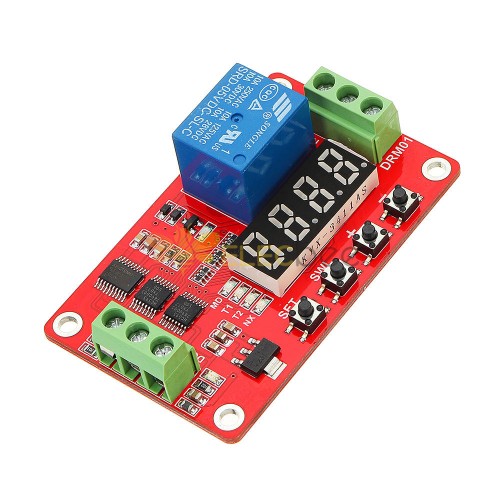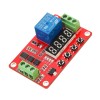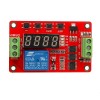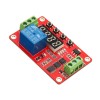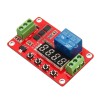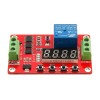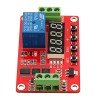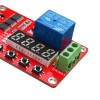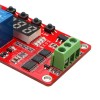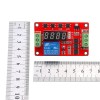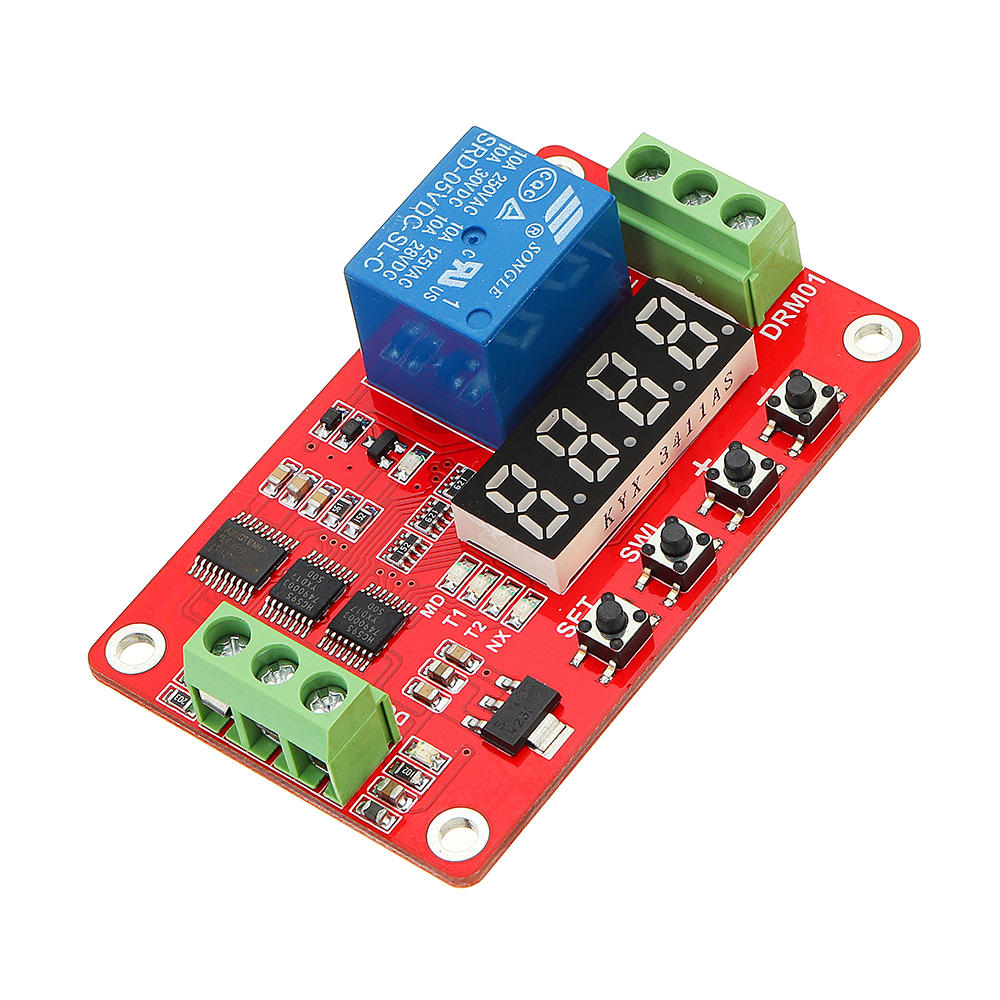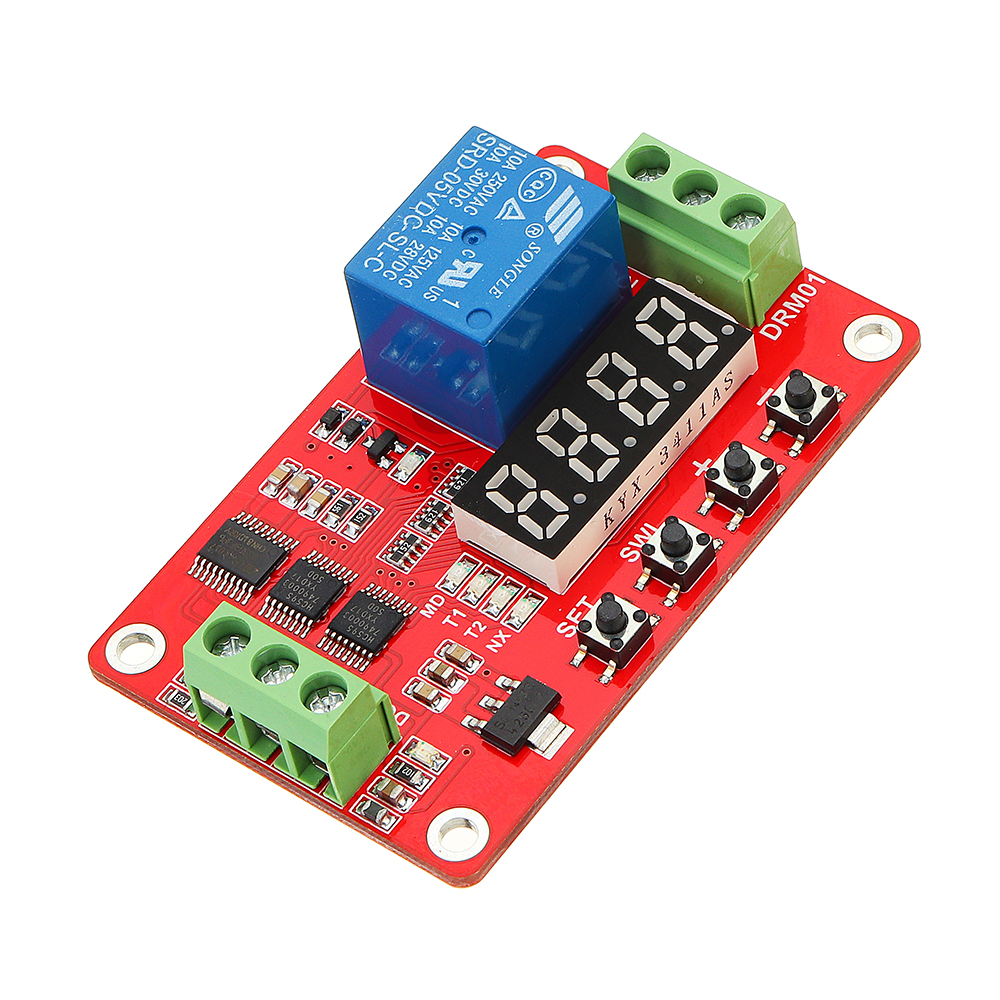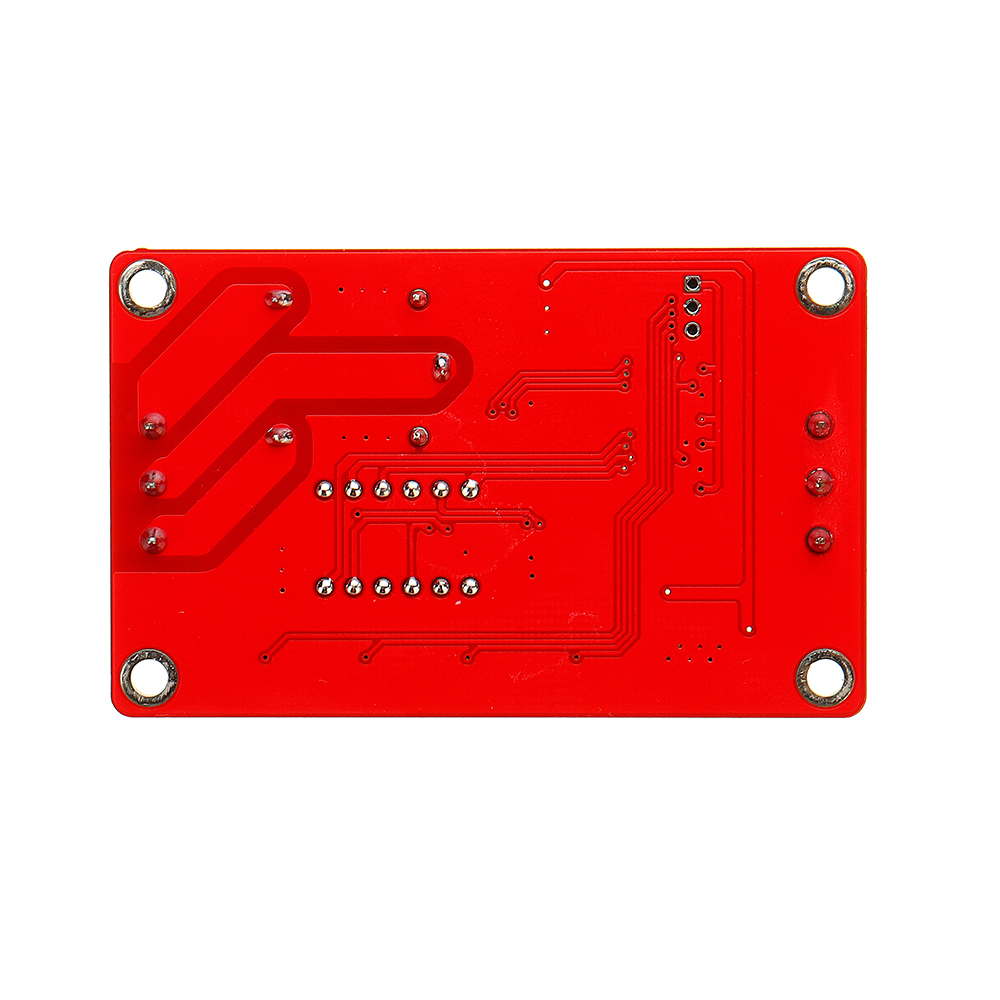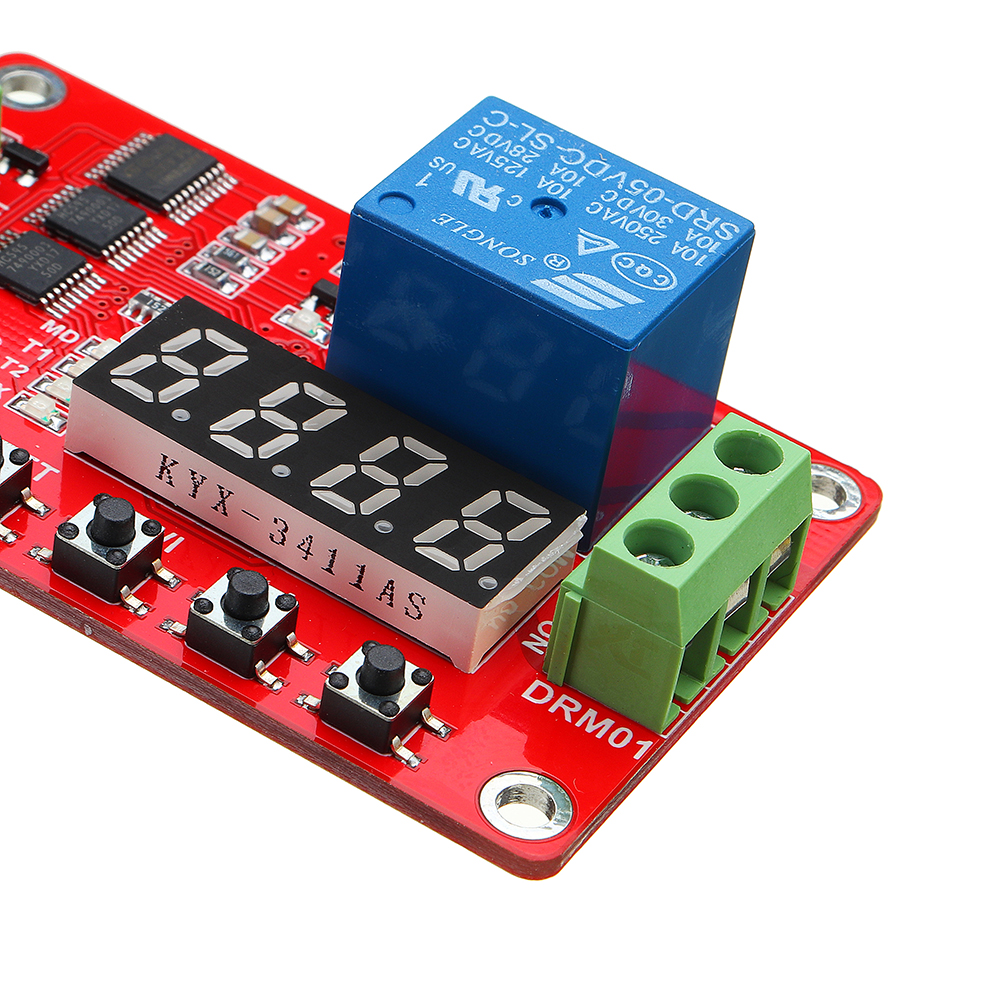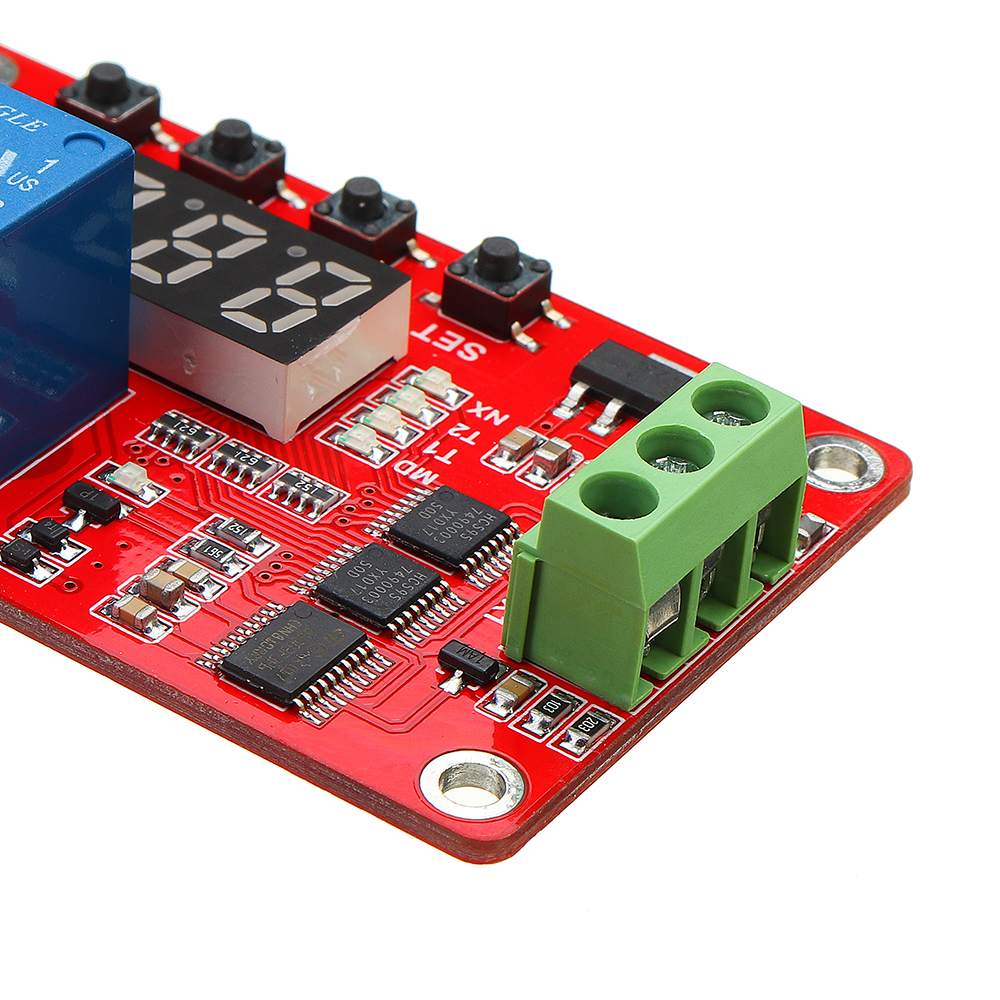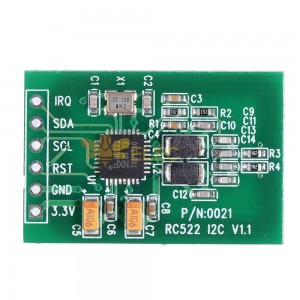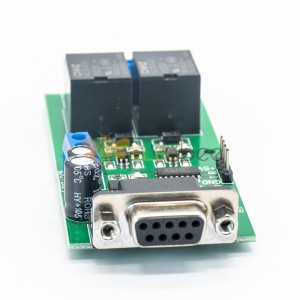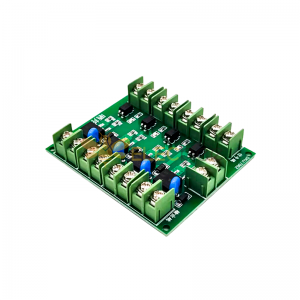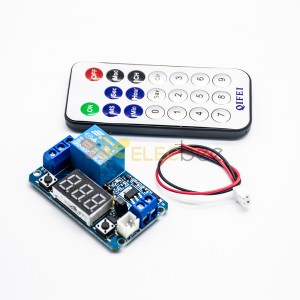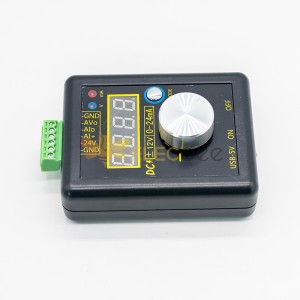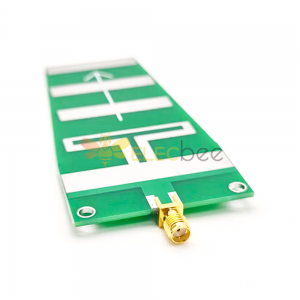1 x Multifunctional Relay Module
Working voltage: DC 24V
Working current: 05V module is less than 90mA (less than 15mA when the relay is not operating, the display is less than 3mA)
Working temperature: -30 ° C - 70 ° C (limit range -40 ° C - 80 ° C)
Relay normally open port maximum load capacity: DC 0-30V/10A, AC 0-250V/10A
Relay normally closed port maximum load capacity: DC 0-28V/10A, AC 0-125V/10A
Dimensions: 66mm x 41mm x 20mm (length x width x height)
Module Interface:
Module voltage / signal input: 3-wire interface, all interfaces have terminal blocks for user convenience
1, DC+: DC power supply positive
2, DC-: DC power supply negative
3, X1: input signal detection interface
Relay load output: 3-wire interface, all terminals have terminal blocks
1, NO: relay normally open interface, the relay is suspended before the suction, after the suction is shorted with COM
2, COM: relay common interface
3, NC: relay normally closed interface, shorted to COM before the relay is sucked, suspended after suction
Module Function:
Users can choose the required functions and parameters by simple operation. All parameters can be saved after power-off. The time parameter setting can be adjusted by 0.1 second minimum, and the precision is better than 0.01 second.
For example, if the user selects the function 16, the system will save the user settings, and the function 16 will be automatically run each time the phone is turned on until the user changes the settings again.
Function 1: Power-on delay pull-in: After the delay of T1 from the start of power-on, the relay is closed, T1 is adjustable between 0.1 seconds and 270 hours, and a high-level pulse signal is given to the X1 interface at any time. Reset and resume running;
Function 2: Power-on delay off: When the power is on, the relay is closed. After the T1 time is closed, the relay is disconnected. T1 is adjustable between 0.1 seconds and 270 hours. A high-level pulse signal is given to the X1 interface at any time. , this function resets and restarts;
Function 3: Timing pull-in and then disconnect: the relay is disconnected at power-on, the relay is closed after the disconnection time T1 arrives; the relay is disconnected after the pull-in time T2 arrives, and T1 and T2 are adjustable between 0.1 seconds and 270 hours. , a high-level pulse signal to the X1 interface at any time, this function resets and restarts the operation;
Function 4: Timing disconnection and re-sucking: the relay is closed when power is on, the relay is disconnected after the pull-in time T1 arrives; the relay is closed after the disconnection time T2 arrives, and T1 and T2 are adjustable between 0.1 seconds and 270 hours. , a high-level pulse signal to the X1 interface at any time, this function resets and restarts the operation;
Function 5: Infinite loop mode 1: The relay is disconnected at power-on, the relay is closed after the disconnection time T1 arrives; the relay is disconnected after the pull-in time T2 arrives, and then the above state is repeated; T1 and T2 are between 0.1 second and 270 hours. Adjustable between each time, give a high-level pulse signal to the X1 interface at any time, this function resets and restarts the operation;
Function 6: Infinite loop mode 2: The relay immediately picks up when power is on, the relay turns off after the pull-in time T1 arrives; the relay picks up after the break time T2 arrives, and then repeats the above state, T1 and T2 are in 0.1 second-270 Adjustable between hours, give a high-level pulse signal to the X1 interface at any time, this function resets and restarts operation;
Function 7: Limited cycle mode 1: The relay is disconnected at power-on, the relay is closed after the disconnection time T1 arrives; the relay is disconnected after the pull-in time T2 arrives, and then the NX times are repeated, T1 and T2 are at 0.1 second - Adjustable between 9999 seconds, the number of cycles NX can be adjusted between 1-9999 times, and a high-level pulse signal is given to the X1 interface at any time. This function is reset and restarted.
Function 8: Limited cycle mode 2: The relay is closed when power is on, the relay is disconnected after the pull-in time T1 arrives; the relay is closed after the disconnection time T2 arrives, and then the NX times are repeated, T1 and T2 are in 0.1 second - Adjustable between 9999 seconds, the number of cycles NX can be adjusted between 1-9999 times, and a high-level pulse signal is given to the X1 interface at any time. This function is reset and restarted.
Function 9: Self-locking relay mode: A high-level pulse signal is sent to the relay X1 interface, the relay is pulled in, and a high-level pulse signal relay is turned off.
Function 10: Level trigger relay mode (including delay off function): When the power is turned on, the relay is disconnected, and a high level signal is sent to the X1 interface. The relay immediately pulls in. After the X1 port signal disappears, the relay still pulls in. After the pull-in time T1 arrives, the relay is turned off, and T1 is adjustable between 0 seconds and 270 hours.
Note: In this function, if T1 is set to 0 seconds, it will become: X1 port has a high level signal relay to pull in, and if there is no signal, it will be disconnected immediately.
Function 11: Timing pull-up after triggering: the relay is disconnected at power-on, giving a high-level pulse signal to the X1 interface, delaying the T1 time relay to pull in, T1 is adjustable between 0.1 seconds and 270 hours, repeating to the X1 interface a high-level pulse signal, repeating the above functions more than once;
Function 12: After the trigger, the timing is disconnected: the relay is turned off when the power is turned on, and a high-level pulse signal is sent to the X1 interface. The relay is closed, and the T1 time relay is disconnected. The T1 is adjustable between 0.1 seconds and 270 hours. Repeat a high-level pulse signal to the X1 interface, repeating the above functions more than once;
Function 13: After the trigger, the timing is closed and then disconnected: the relay is turned off when the power is turned on, and a high-level pulse signal is sent to the X1 interface. After the disconnection time T1 arrives, the relay is closed; after the pull-in time T2 arrives, the relay is disconnected, T1 And T2 can be adjusted between 0.1 seconds and 270 hours, repeating a high-level pulse signal to the X1 interface, repeating the above functions;
Function 14: After the trigger, the timing is disconnected and re-closed: the relay is disconnected at power-on, a high-level pulse signal is sent to the X1 interface, the relay is closed, the relay is turned off after the pull-in time T1 arrives, and the relay is turned off after the disconnection time T2 arrives. Pull-in, T1 and T2 are adjustable between 0.1 seconds and 270 hours, repeating a high-level pulse signal to the X1 interface, repeating the above functions more than once;
Function 15: Infinite loop mode after triggering 1: The relay is disconnected at power-on, giving a high-level pulse signal to the X1 interface. After the delay time T1 arrives, the relay is closed; after the pull-in time T2 arrives, the relay is disconnected and then repeated. The above actions, T1 and T2 are adjustable between 0.1 second and 270 hours, and a high-level pulse signal is repeatedly given to the X1 interface, and the above functions can be restarted;
Function 16: Infinite loop mode after triggering 2: The relay is disconnected at power-on, a high-level pulse signal is sent to the X1 interface, the relay is closed, the relay is turned off after the pull-in time T1 arrives, and the relay is closed after the disconnection time T2 arrives. Then repeat the above actions, delay T1 and T2 to be adjustable between 0.1 seconds and 270 hours, repeat a high-level pulse signal to the X1 interface, and restart the above functions;
Function 17: Limited cycle timing mode after triggering 1: The relay is disconnected at power-on, giving a high-level pulse signal to the X1 interface. After the disconnection time T1 arrives, the relay is closed; after the pull-in time T2 arrives, the relay is disconnected, and then the relay is turned off. Repeat NX times or more, T1 and T2 are adjustable between 0.1 seconds and 9999 seconds, and the cycle number NX is adjustable between 1-9999 times. Repeating a high-level pulse signal to the X1 interface can restart the above functions;
Function 18: Limited cycle timing mode after triggering 2: The relay is disconnected at power-on, a high-level pulse signal is sent to the X1 interface, the relay is immediately pulled in, the relay is turned off after the pull-in time T1 arrives, and the relay is turned off after the break time T2 arrives. Pull in, then repeat NX times or more, at this time T1 and T2 are adjustable between 0.1 seconds and 9999 seconds, the number of cycles NX is adjustable between 1-9999 times, repeating a high-level pulse signal to the X1 interface. , you can restart the above functions;
Function 19: Conditional cycle mode 1: The relay is disconnected at power-on, giving a high-level signal to the X1 interface. After the delay time T1 arrives, the relay is closed; after the pull-in time T2 arrives, the relay is disconnected, as long as the X1 port is high. Does not disappear, the module will repeat the above action, T1 and T2 can be adjusted between 0.1 seconds and 270 hours. If the high level signal of the X1 interface disappears, the relay will be disconnected immediately and the function will be reset.
Function 20: Conditional loop mode 2: The relay is disconnected at power-on, a high level signal is sent to the X1 interface, the relay is closed, the relay is turned off after the pull-in time T1 arrives, and the relay is closed after the disconnection time T2 arrives, as long as X1 The high level of the port does not disappear, the module will repeat the above action, the extension T1 and T2 can be adjusted between 0.1 seconds and 270 hours. If the high level signal of the X1 interface disappears, the relay will be disconnected immediately and the function will be reset.

